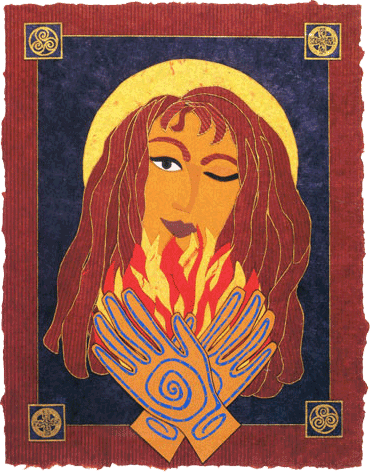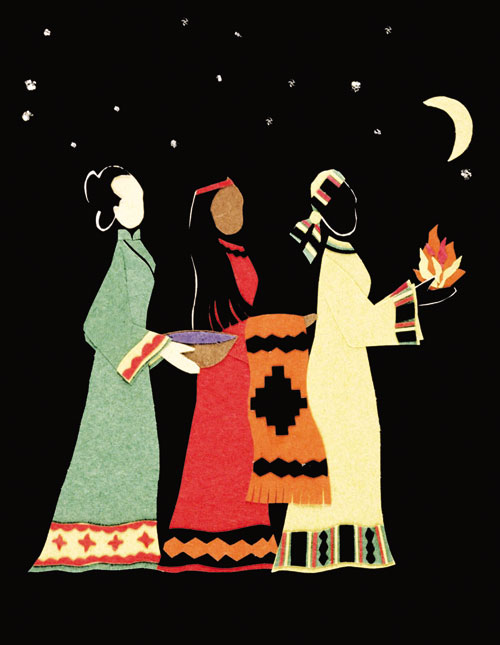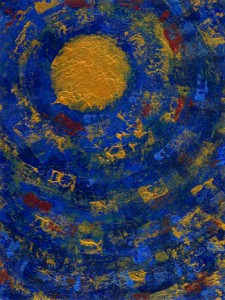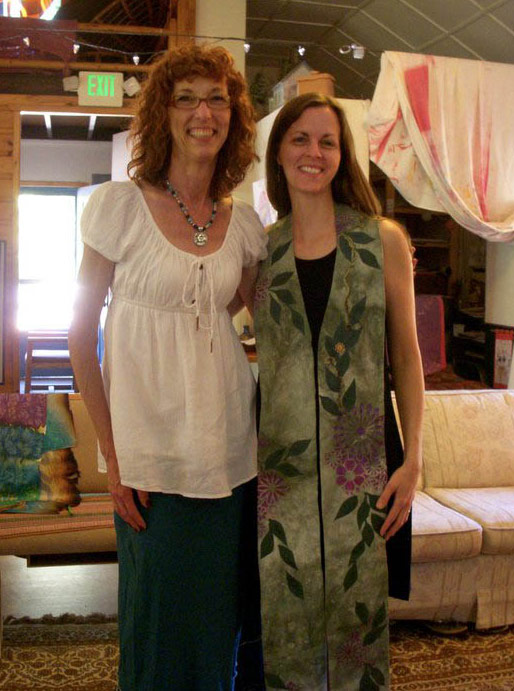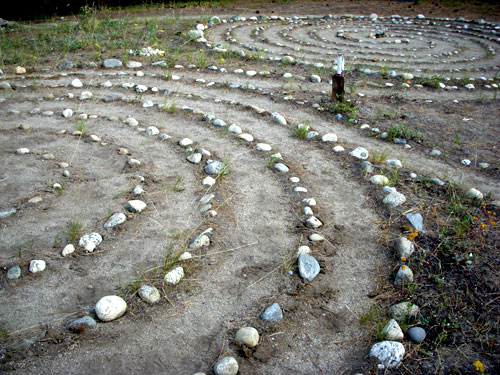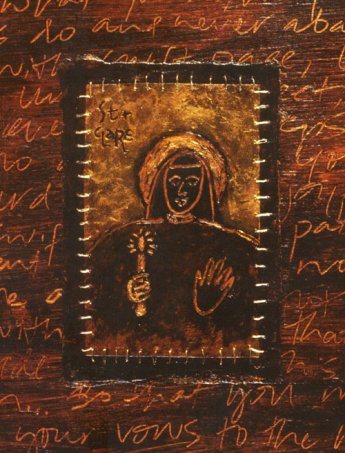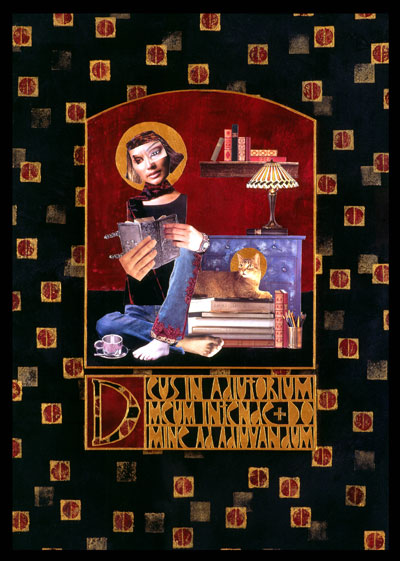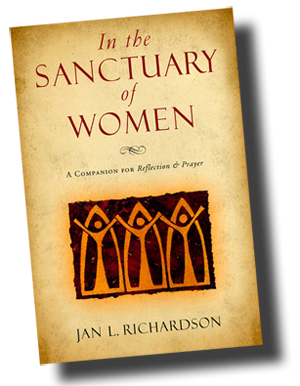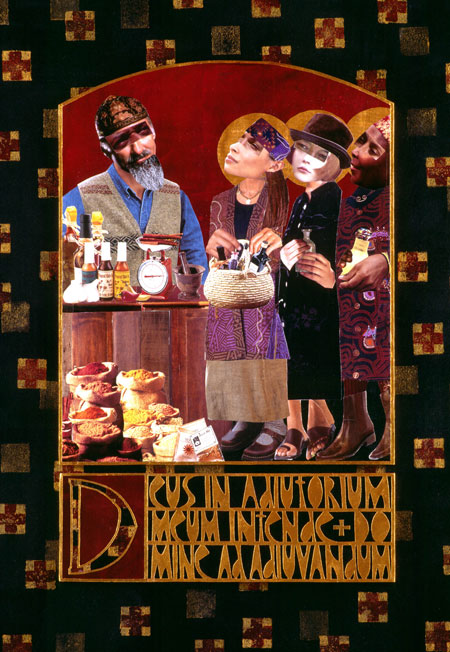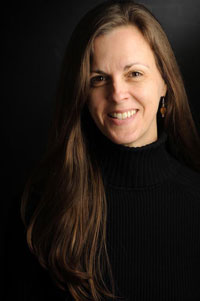This week offers us plenty of cause for celebration, with two feast days in store. February 1 is the Feast of Saint Brigid, the beloved Celtic saint whose leadership helped shape the early church in Ireland. Famous for her hospitality (“Every guest is Christ,” Brigid said), Brigid was a worker of wonders whose miracles often involved providing sustenance to those in need—sometimes giving folks what they didn’t even know they needed.
February 2 is Candlemas Day, also known as the Feast of the Presentation or the Feast of the Purification of Mary, marking the occasion when Mary and Joseph took Jesus to the Temple for the rites following a birth. Brigid, whose life inspired many legends about her powers—including the ability to move across time—appears among the stories of Jesus’ birth and his presentation in the Temple. (For more about Brigid’s connection with Candlemas, visit Feast of the Presentation/Candlemas at my blog The Painted Prayerbook.)
The monastic community that I’m part of takes its name from Saint Brigid, and I’m looking forward to celebrating this week with my sisters and brothers in Saint Brigid of Kildare Monastery. Here at Sanctuary of Women, I’d like to invite you to join in the festivities. To celebrate Brigid, here’s a reading from my book In the Sanctuary of Women, which devotes a chapter—a month’s worth of reflections—to this lively, fiery worker of wonders and to the themes and questions her life inspires us to explore in our own lives.
Provision
Most of Brigid’s recorded miracles are feats of provisioning by which she secures an abundance of fare for daily sustenance as well as for festive occasions. In Brigid’s presence, butter is replenished; the bacon she slips to a dog miraculously reappears in the pot; a stone turns to salt; water becomes milk or beer or, in one instance, an aphrodisiac. Her plenitude consciously echoes Christ’s miracles of provisioning—water into wine, a few loaves and fish into a feast—and embodies God’s abundant generosity. In a poem attributed to Brigid, she wishes she had a “lake of ale” to offer to the King of Kings.
The Vita Prima [one of the early accounts of Brigid’s life] relates this story:
Some clerics came to Brigit and preached the word of God. Afterwards Brigit said to her cook, “Get a meal ready for our distinguished guests.” The cook said in reply, “What shall I give them for dinner?” And Brigit said, “Give them bread and butter and onions and lots of courses.” The cook replied, “Yes, I will, but do you go to the church first because the cook hasn’t any of the things you mention!” And Brigit said to the cook, “Sweep the floor of the kitchen and shut it and go home and pray there and I shall go to the church.” Now at the sixth hour Brigit called the cook by clapping her hands and said to her, “It’s time to give food to the guests. Go to the kitchen and give them a generous helping of whatever you find there.” Then on opening the kitchen she found all the provisions that Brigit had mentioned and the provisions did not run short for seven days but were ample for both the guests and all of Brigit’s community, and nobody except Brigit and her holy cook knew where these provisions had come from or who had brought them.
As someone whose ministry involves raising my entire income, I find myself thinking a lot about provision. How do I keep food on my table and a roof over my head by my own power? Part of the answer lies in remembering that I don’t, in fact, do this alone. Over time I’ve learned to be more intentional about praying for provision. “Ask, seek, knock,” Jesus said. It stretches me sometimes, opening myself to pray about matters that seem so basic. Yet what we find in Brigid’s life—not to mention in the Gospels—is a persistent reminder that the mundane and the miraculous are inextricable. In the very stuff of our daily lives—food, shelter, work, community—God makes a home, looking for ways to offer us what we most need.
I’ve also learned to give thought to what I really need. For more than a decade I’ve lived in a studio apartment, a small space that affords continual opportunities for spiritual practice regarding possessions. I have to be vigilant about what crosses the threshold, discerning about what I bring in and what I need to let go of. Part of what I’ve discovered in this space is that often it takes only the tiniest thing to blow me away with its loveliness, its power, its provision.
Plenitude
At lunch today
it was the purple
of the olive pits
against my cobalt plate
that stunned me.
At tea,
the gold of peach
bloodstained by its stone.
I do not know
where the greater part
of the miracle lies:
that I should pause
to notice this,
or that I,
a woman of
such great hungers,
should be so well satisfied
by such small things.
Blessing
May the God of small things
delight you this day.
As we enter into Brigid’s feast, what are you in need of? Is there a deeper need that lives beneath this one? How do you ask for/pray for/seek the provision you need? How do you keep yourself open to its finding you in a form you did not expect? Is there someone who needs provision in a form that you could offer?
May you have a blessed and festive week!
For a previous reflection on Saint Brigid, please visit Golden, Sparkling Flame: Feast of St. Brigid.
